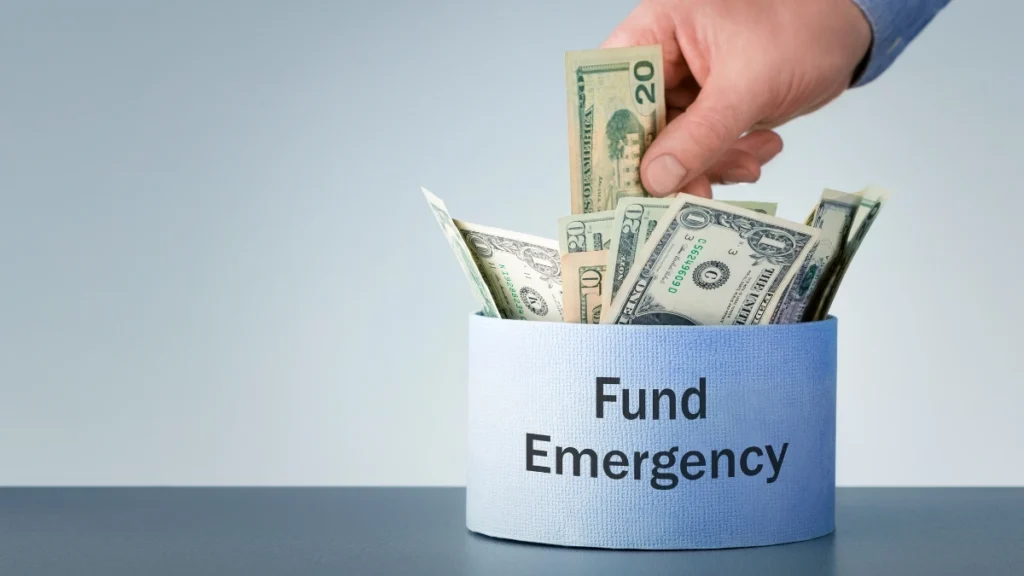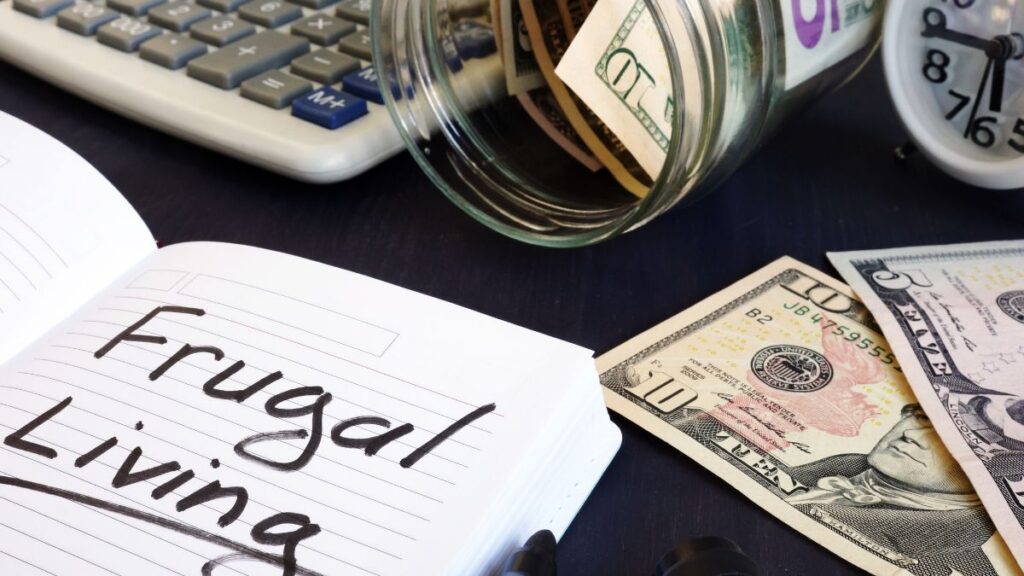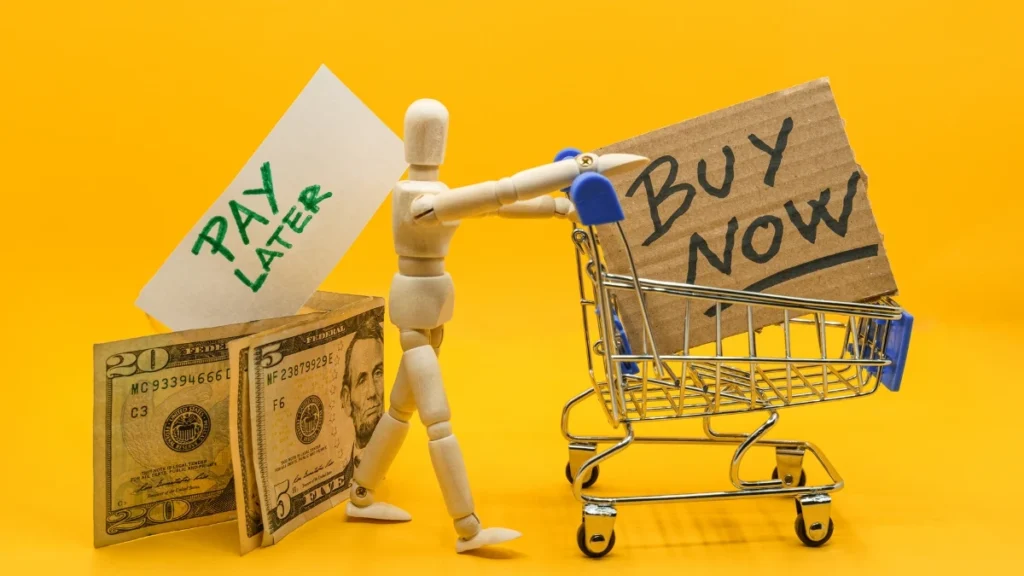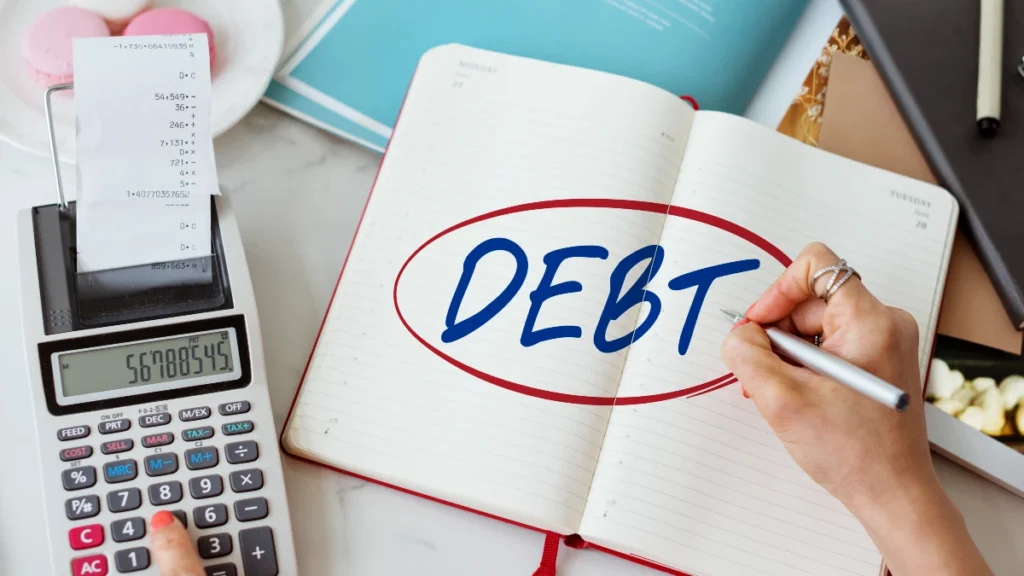You track your spending, skip the daily latte, and hunt for bargains… so why does your bank account still feel empty just before payday? It’s frustrating. You’re putting in the effort to be “good with money,” but you’re not seeing any real progress. It feels like you’re stuck.
Some seemingly smart financial decisions are actually traps. They feel responsible in the moment, but they keep you in a cycle of being broke. These are the financial habits that keep you broke by hiding in plain sight. Many of these are common money mistakes we’re taught to believe are good ideas.
This article will show you 15 of these deceptive habits. More importantly, you’ll get a clear, actionable roadmap for 2025 to replace them with strategies that actually build wealth and give you breathing room.
Prioritizing Extreme Frugality
Focusing only on cutting costs has a limit. True financial growth comes from expanding your income streams, not just minimizing your expenses.
Time is money. Spending 30 mins to save $2 can cost you more in lost earning potential.
Always Buying the Cheapest Option
Low-quality items often need frequent replacement, leading to higher costs over time. Investing in quality saves you money and frustration.
Quality over quantity: One $150 pair of boots can outlast five $30 pairs.
Debit Card Only Approach
Avoiding credit cards means missing out on building a strong credit history, which is crucial for major loans, and losing cashback rewards.
A good credit score can save you $50,000+ in interest on a mortgage.
Saving What’s Left Over
This passive approach often results in little to no savings. Make saving a priority by treating it as your most important monthly “bill.”
“Pay Yourself First” by automating even 1% of your paycheck to build a solid habit.
Low-Interest Emergency Fund
Inflation silently erodes the value of your emergency fund in a traditional savings account. Make your money work for you.
A HYSA can earn $450 on $10k annually, versus just $1 in a standard account.
Your Action Plan
1. Focus on Growth: Shift energy from penny-pinching to skill-building.
2. Invest in Quality: Buy items that last.
3. Build Your Credit: Use credit cards responsibly.
4. Automate Savings: Pay yourself first, always.
5. Optimize Your Funds: Use a HYSA for your savings.
1. Prioritizing Extreme Frugality Over Increasing Income

Cutting your expenses feels like the most responsible thing you can do when money is tight. And it is important. But when it becomes your only strategy, it’s a trap. There is a “frugality ceiling” you can only cut so much from your budget before you’re living on bare bones and making yourself miserable. Your ability to earn more, however, is practically unlimited.
Your time is your most valuable resource, and extreme frugality often makes you trade it for pennies. Say you make $20 an hour. If you spend 30 minutes driving across town to save $2 on groceries, you just spent $10 of your time. You didn’t save $2; you lost $8.
This mindset forces you into a state of scarcity. When all your mental energy goes toward saving, you’re always thinking about what you can’t do. You close yourself off from opportunities because you’re focused on defense, not offense. But the real answer to how to stop being broke is often found by shifting your focus to growth.
Instead of spending an hour hunting for coupon codes, spend that hour on a free lesson on Coursera or watching a YouTube tutorial on a valuable skill. According to reports from sites like Upwork, the demand for skilled freelance work continues to grow. Building one small skill can create an income stream that adds far more to your bottom line than cutting coupons ever could.
2. Always Buying the Cheapest Version of Everything

Choosing the cheapest option at the store feels like an obvious win. You just saved money right now. But this is one of the most common money mistakes because it almost always costs you more in the long run.
This is best explained by the “Boots Theory.” A man who can only afford $30 boots will buy a new pair every winter when they fall apart. A man who can afford $150 boots buys a pair that lasts him five years. Over five years, the first man spends $150 on five cheap pairs and has cold, wet feet. The second man spends $150 once and has warm, dry feet for five years. They spent the same amount, but one got far more value.
This applies to so much more than boots. Think of a cheap $300 laptop that slows to a crawl in 18 months versus a $700 laptop that runs smoothly for five years. Or a cheap kitchen knife that needs constant sharpening versus a quality one that makes cooking easier every single day.
Before you buy the cheapest option, ask yourself:
- How often will I use this?
- What is the cost of failure if it breaks?
- How much is my time and peace of mind worth?
3. Treating Your Debit Card as Your Only Financial Tool

The old advice is, “If you can’t pay cash, you can’t afford it.” Using a debit card feels safe because you’re only spending money you already have. Many people avoid credit cards because they’ve heard horror stories about debt. That fear is valid, but avoiding credit cards entirely is like avoiding all cars because some people drive recklessly. A credit card is a tool, and when used correctly, it’s powerful.
Relying only on a debit card means you’re missing two huge benefits.
First, you’re not building your credit history. A good credit score proves you are financially responsible. When you need a major loan for a car or home, a good score can save you a fortune. A 1% difference in your mortgage rate on a $300,000 loan, for example, could save you over $50,000 in interest over 30 years.
Second, you’re missing out on free money and serious consumer protection. A simple cashback credit card can earn you 1.5% to 2% back on every purchase. If you spend $1,500 a month on things you’d buy anyway, that’s up to $360 back in your pocket each year. More importantly, if someone steals your debit card info, your actual money is gone. Getting it back is a painful process. If your credit card is used fraudulently, it’s the bank’s money at risk, and you’re protected by law.
The rule is simple and non-negotiable: only use it for planned purchases and pay the entire balance in full every single month. This is a core part of building good financial habits.
4. Saving What’s Left Over Instead of Paying Yourself First

At the end of the month, you look at what’s left in your checking account and move whatever you can to savings. This sounds logical, but it’s a reactive strategy that rarely works. Some months, there is nothing left. Life happens a car repair, a doctor’s visit and your good intentions disappear.
The solution is to “Pay Yourself First.” This means you treat your savings like your most important bill. Saving becomes the first thing you do when you get paid, not the last.
This simple shift has a powerful effect. It makes saving a priority, not an afterthought. It also stops “lifestyle creep.” You know how it goes: you get a $200/month raise, and without a plan, that money just gets absorbed by more expensive groceries or a few extra takeout meals. You make more, but you’re not getting ahead.
Here’s how to set this up in 10 minutes: Log into your bank account, find the “automatic transfers” option, and set up a recurring transfer from your checking to your savings for the day after every payday.
If you think you can’t afford it, start ridiculously small. Automate just 1% of your paycheck. For most people, that’s small enough not to miss. The amount isn’t the point at first. The point is to build the habit. This is one of the fastest ways to learn how to stop being broke.
5. Keeping a Large Emergency Fund in a Traditional Savings Account

You did the right thing. You saved up an emergency fund with 3-6 months of living expenses. This is a huge financial win. But where you keep that money is just as important as having it. If it’s sitting in a traditional savings account from a big bank, it’s silently losing power every single day.
The enemy here is inflation. Inflation is why a bag of groceries that cost $80 last year now costs $85. If your money is in an account earning 0.01% interest, it isn’t growing. This means your hard-earned safety net can buy you less and less each year. It’s like a slow leak in a tire.
The fix for this in 2025 is a High-Yield Savings Account (HYSA). These accounts are just as safe they are typically FDIC-insured up to $250,000, just like a regular bank. Your money is also easy to access; you can transfer it to your checking account in 1-3 business days. They simply pay you far more interest because they are often online-only banks with lower costs.
Here’s the difference: $10,000 in a traditional savings account might earn you $1 in interest over a year. In an HYSA paying 4.5%, that same $10,000 earns you $450. Moving your emergency fund is perhaps the easiest and fastest financial upgrade you can make. This is a fundamental step in building good financial habits because it protects the value of your safety net.
Of course. Here are the expanded versions of the next five sections, written with more detail and actionable advice as you requested.
6. DIYing Everything to “Save Money”

On the surface, doing it yourself is the ultimate frugal hack. Why pay a plumber $200 for a job you can figure out from a YouTube video? It feels proactive and resourceful to tackle projects on your own. This mindset is great, but it can quickly backfire and become one of the most classic common money mistakes.
The problem is that this thinking ignores three hidden costs:
- The Cost of Your Time: Your time has value. If you make $25 an hour at your job and spend eight hours on a Saturday fixing a running toilet to save a $200 plumber fee, you didn’t really save anything. You essentially worked a second job for your regular pay rate, but with more frustration. Could you have used that time to rest, learn a new skill, or work on a side project that could earn you more?
- The Cost of Mistakes: A professional knows how to handle unexpected problems. When you DIY, a small mistake can turn into a catastrophe. A botched plumbing job can cause a leak that damages your floors and ceiling, costing thousands to repair. An incorrect car repair could leave you stranded or, worse, be unsafe to drive.
- The Cost of Tools: That “free” repair often requires buying specific tools you may only use once. That $200 you saved from the plumber might shrink to $50 after you buy a specialized wrench and other supplies.
The smart approach isn’t to never DIY, but to be strategic. Before starting, get one professional quote. Then, honestly ask yourself: Do I have the skills, the time, and the right tools? If the project is low-risk (like painting a room) and you enjoy it, go for it. If it’s high-risk (like electrical work) or the cost of your time is more than the savings, hiring a pro is the true money-saving decision.
7. Focusing Only on Paying Off Debt Without Investing

Getting out of debt feels like the most responsible financial goal you can have. It makes perfect sense to throw every spare dollar at your loans to become debt-free as fast as possible. While the desire to be free from debt is fantastic, a laser focus on it can cause you to miss a huge opportunity.
The trap here is the lost time for compound growth. Time is the most important ingredient in building wealth. Money that is invested early on has decades to grow, and the earnings on that money start earning their own money. By waiting until you are 35 and completely debt-free to start investing, you miss out on your most powerful growth years.
The key is to understand that not all debt is the same.
- High-Interest Debt: This is anything with an interest rate above 7-8%, like credit cards or personal loans. This debt is a financial emergency. The interest is costing you a fortune, and you should attack it aggressively.
- Low-Interest Debt: This is debt with a rate below 6%, like a mortgage, federal student loans, or a reasonable car loan.
Instead of seeing it as an “all or nothing” choice, a balanced approach is better for building good financial habits. First, if your job offers a 401(k) match, contribute enough to get the full amount. That’s a 100% return on your money, and passing it up is a major mistake.
After getting the match, destroy your high-interest debt. Once that’s gone, you can increase your investing while making the standard payments on your low-interest debt. The historical average return of the stock market is around 10%. If your debt costs you 4%, you come out ahead financially by investing the extra money instead of paying that loan off early.
8. Using “Buy Now, Pay Later” (BNPL) for Small Purchases

Services like Afterpay or Klarna make purchases feel much more manageable. Splitting a $120 pair of shoes into four interest-free payments of $30 feels like a smart budgeting trick. It lowers the immediate financial hit and seems like a harmless way to manage cash flow.
This convenience is one of the most modern financial habits that keep you broke. The danger isn’t the interest rate; it’s the psychology.
- It Normalizes Impulse Spending: BNPL removes the “pain” of paying. It changes the question in your head from “Can I afford these $120 shoes?” to the much easier question, “Can I afford $30 right now?” This makes it incredibly easy to buy things you don’t need and wouldn’t have bought if you had to pay the full price upfront.
- It Creates a Web of Micro-Debts: One BNPL plan is simple. But soon you have one for shoes, one for a concert ticket, and another for a new jacket. Suddenly, you have multiple small payments leaving your account on different dates. This complicates your budget, makes it hard to track your real spending, and raises the odds you’ll miss a payment.
- The Penalties are Harsh: While the loans are often advertised as interest-free, that’s only if you pay on time. One missed payment can trigger steep late fees and other penalties, quickly making your “good deal” far more expensive than the original price.
The solution is to treat BNPL with extreme caution. For non essential items, use the “24-Hour Rule”: if you want it, wait a full day before buying. This pause breaks the impulse. If you do use BNPL, reserve it only for truly necessary, pre-planned purchases that you already budgeted for, and never have more than one or two plans active at once.
| Financial Area | The “Feel-Good” Trap | The Smarter Solution |
|---|---|---|
| Spending Strategy | Focusing only on extreme frugality. | Shift focus to increasing your income. |
| Purchasing Habits | Always buying the cheapest version. | Invest in quality items that last longer. |
| Building Credit | Using only a debit card to avoid debt. | Use credit cards responsibly to build credit. |
| Savings Method | Saving whatever is left over at month’s end. | “Pay Yourself First” with automatic transfers. |
| Emergency Fund | Keeping it in a traditional low-interest account. | Move it to a High-Yield Savings Account (HYSA). |
9. Chasing Credit Card Points and Rewards Blindly

Using a rewards credit card feels like you are hacking the system. You are spending money you would have spent anyway and getting valuable perks like free flights, hotel stays, or cashback. It feels like you’re getting something for nothing.
Credit card companies are not charities. They design these rewards programs with a deep understanding of psychology, and their primary goal is to encourage you to spend more money. Chasing rewards can subtly trick you into making poor financial decisions.
Here are the common traps of chasing points:
- Meeting the Sign Up Bonus: Many cards offer a big point bonus if you spend a certain amount (e.g., $4,000 in 3 months). This can tempt you to buy things you don’t need just to hit the threshold, completely wiping out the value of the bonus.
- Category Specific Spending: A card might offer 5% back on groceries. This might cause you to shop at a more expensive grocery store instead of a discount one, costing you more than the 5% you get back.
- Justifying Purchases: The most dangerous trap is the thought, “Well, I get points for it.” This logic can be used to justify any purchase, from expensive dinners to new gadgets, derailing your budget in the process.
The right way to use rewards is to treat them as a passive bonus, not an active goal.
- Create your budget first.
- Make your planned purchases.
- Use the card that gives you the best reward for that purchase.
10. “Investing” in Whole Life Insurance

Whole life insurance is often presented as the ultimate responsible financial product. A salesperson might frame it as a simple way to get both a life insurance policy and a guaranteed investment, all in one package. It feels safe and secure.
This convenience comes at a very high cost. Whole life policies are packed with high fees, commissions for the salesperson, and administrative charges that eat away at your money. The “investment” part, known as cash value, typically grows at a very slow rate, sometimes barely keeping up with inflation. You are essentially paying a premium for two bundled products, and getting a poor deal on both.
A far more effective strategy is to separate your insurance and investing needs. This is known as “buy term and invest the difference.”
- Step 1: Buy Term Life Insurance. This type of insurance is simple and cheap. It covers you for a specific term (like 20 or 30 years). Its only job is to provide your family with a payout if you pass away during that term. It has no complex investment component.
- Step 2: Invest the Difference. Because term insurance is so much cheaper than whole life, you will have a significant amount of money left over each month. You can invest this difference in a low cost index fund (like an S&P 500 fund), which historically has provided much higher returns.
11. Prioritizing Paying Off Low Interest Debt (Like a Mortgage) Early

It feels amazing to send an extra payment to your mortgage lender. Every dollar you send gets you closer to owning your home outright, a powerful and secure feeling. Psychologically, it feels like a guaranteed win.
The problem isn’t that paying off your home is bad; it’s about opportunity cost. Your money can only be in one place at a time. When you use a dollar to pay down a low-interest debt, you lose the opportunity for that dollar to earn a higher return elsewhere.
Let’s use a simple example:
- Your mortgage has a 4% interest rate. Every extra dollar you pay saves you 4% in future interest.
- You could instead invest that dollar in the stock market, which has historically returned an average of about 9-10% per year over the long term.
A Better Way to Think About It:
- High-Interest Debt (>7%): Aggressively pay this down! Credit cards, personal loans, and some student loans fall into this category. The interest is so high that paying it off is a guaranteed high return.
- Low-Interest Debt (<5%): Consider making only the minimum payments. Take your extra money and invest it for a potentially higher return. This includes most mortgages and some auto loans.
12. Waiting for the “Perfect” Time to Invest

Watching the stock market go up and down is nerve wracking. It feels prudent and wise to keep your money in cash and wait for the market to crash. The idea is to “buy low” and get a great deal.
But this strategy is a trap called market timing. In reality, it is nearly impossible to predict market movements consistently. More often than not, people who wait for the perfect moment miss out on significant gains. The most important factor for investment success isn’t timing the market, but your time in the market. The longer your money is invested, the more time it has to grow and recover from downturns.
Here are the dangers of waiting on the sidelines:
- You Miss the Best Days: Some of the market’s biggest gains happen unexpectedly. Missing just a handful of the best days can drastically reduce your long-term returns.
- Emotion Takes Over: Waiting often turns into fear. When the market does drop, it can be terrifying to put your money in, and you might end up waiting even longer, missing the rebound.
- Inflation Eats Your Cash: While you wait, the cash you’re holding onto is losing purchasing power every single day due to inflation.
13. Over Diversifying with Dozens of Different Stocks or Funds

The advice “don’t put all your eggs in one basket” is fundamental to investing. So, it seems logical that if a little diversification is good, a lot must be better. It feels safe to spread your money across 30 different stocks, 10 different mutual funds, and a few ETFs for good measure.
This can lead to a problem finance experts call “diworsification.” When you own too many different things, you start to dilute your potential for strong returns. Your portfolio becomes a complicated, expensive, and messy version of a simple market index fund.
Here’s why simplicity is often better:
- Lower Costs: Every fund has an expense ratio (a management fee). Owning dozens of funds can mean you’re paying more in fees than you need to.
- Easier to Manage: A simple portfolio with just a few funds is easy to track and rebalance. A complex one can be a headache to oversee.
- Prevents Overlap: Many large funds hold the same popular stocks (like Apple, Microsoft, or Amazon). Owning many different funds may just mean you own the same stocks multiple times, defeating the purpose of diversifying.
For most people, a simple three fund portfolio is more than enough. This typically includes a total U.S. stock market index fund, a total international stock market index fund, and a total bond market index fund. It’s cheap, simple, and provides all the diversification you truly need.
14. Financially Supporting Family and Friends Before Securing Your Own Oxygen Mask

It is a deeply caring and noble act to help a family member or friend who is struggling financially. It feels like the right and loyal thing to do, and the emotional reward is immediate.
However, if you provide financial support at the expense of your own financial health by draining your savings, skipping retirement contributions, or going into debt you risk creating a bigger problem. Think of the safety briefing on an airplane: you must put on your own oxygen mask first before helping others. If you run out of oxygen, you can’t help anyone.
The same is true for your finances. If you don’t build a strong financial foundation for yourself first, you will eventually be unable to help anyone, including yourself.
Consider a healthier way to provide support:
- Give What You Can Afford: Offer an amount that is a true gift, with no expectation of being paid back and without impacting your own essential financial goals.
- Offer Non-Financial Help: Can you help them create a budget, write a resume, or provide childcare so they can look for work? This kind of help can be more valuable than cash.
- Set Clear Boundaries: It is okay to say “no” or “I can only help with this much.” Protecting your own financial stability is not selfish; it’s a requirement for long-term security.
15. Constantly Searching for a New Budgeting App or System

Getting organized feels productive. Spending a weekend researching the best new budgeting app, reading reviews, and setting up a complex spreadsheet can feel like you’re making real progress on your financial goals.
But this behavior is often a clever form of procrastination. It’s a trap known as analysis paralysis, where you spend so much time planning and perfecting your tools that you never get around to the actual work: tracking your spending and making changes. The “perfect” system doesn’t exist. What matters is consistency.
An imperfect budget that you use every week is infinitely better than a perfect one you abandon after three days. The tool is not the solution; the habit is the solution.
Here is a simple plan to break the cycle:
- Pick One “Good Enough” System: Choose one app (like YNAB or Monarch Money) or even a simple notebook. Don’t overthink it.
- Commit for 90 Days: Promise yourself you will stick with this one system for three full months. Don’t allow yourself to even look for alternatives during this time.
- Focus on Action, Not Perfection: The goal is not to have a flawless budget. The goal is to build the habit of paying attention to where your money is going. Imperfect action will always beat perfect inaction.

